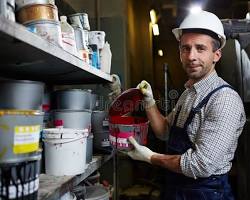In the industrial manufacturing sector, bucket factories play a crucial role in producing high-quality buckets essential for various applications, including construction, agriculture, and mining. To stay competitive and meet customer demands, these factories continuously improve their product quality and operational efficiency. This article explores how leading bucket factories achieve these goals through innovative practices and advanced technologies.

Use of Cutting-Edge Materials
A hallmark of a top bucket factory is the use of cutting-edge materials that enhance the durability and performance of their products. These factories invest in high-grade steel alloys and wear-resistant materials to ensure their buckets can withstand harsh conditions and heavy-duty use. By prioritizing material quality, a bucket factory can produce products that offer superior strength and longevity.
Implementation of Advanced Manufacturing Processes
To improve both quality and productivity, a bucket factory implements advanced manufacturing processes. Automation plays a key role in this, with robotic welding and CNC (Computer Numerical Control) machining ensuring precision and consistency in production. These technologies reduce human error and increase production speed, allowing a bucket factory to meet high demand without compromising on quality.
Comprehensive Quality Assurance Programs
Quality assurance is a critical component of production at any reputable bucket factory. Stringent testing protocols are implemented to verify the strength, durability, and overall quality of the buckets. This includes load testing to ensure buckets can handle maximum weights and inspections at various stages of production to identify and rectify any defects. High standards of quality control ensure that customers receive reliable and well-crafted products from the bucket factory.
Continuous Innovation
Innovation is essential for maintaining a competitive edge. A top bucket factory invests in research and development to explore new design concepts and manufacturing techniques. By incorporating customer feedback and staying abreast of industry trends, these factories can develop innovative products that meet evolving market needs. For instance, some factories are exploring the integration of smart technologies into their buckets, such as sensors that monitor wear and tear or usage data.
Focus on Sustainability
Sustainability has become a significant focus for modern bucket factories. These factories adopt environmentally friendly practices, such as reducing waste, recycling materials, and optimizing energy usage. By prioritizing sustainability, a bucket factory not only contributes to environmental conservation but also appeals to eco-conscious consumers. This focus on sustainability can also lead to cost savings and operational efficiencies.
Exceptional Customer Service
A leading bucket factory is also known for its exceptional customer service. These factories provide comprehensive support, from product selection advice to after-sales service. By building strong relationships with their customers, a bucket factory can better understand their needs and provide tailored solutions. This customer-centric approach helps to build loyalty and trust, ensuring long-term success.
Conclusion
In conclusion, the best bucket factories continuously enhance their product quality and productivity through a combination of advanced materials, innovative manufacturing processes, rigorous quality assurance, continuous innovation, sustainability practices, and exceptional customer service. By focusing on these key areas, a bucket factory can meet the high standards required by their customers and maintain their position as leaders in the industry. As the market evolves, these factories will continue to adapt and innovate, ensuring they remain at the forefront of the industrial manufacturing sector.
